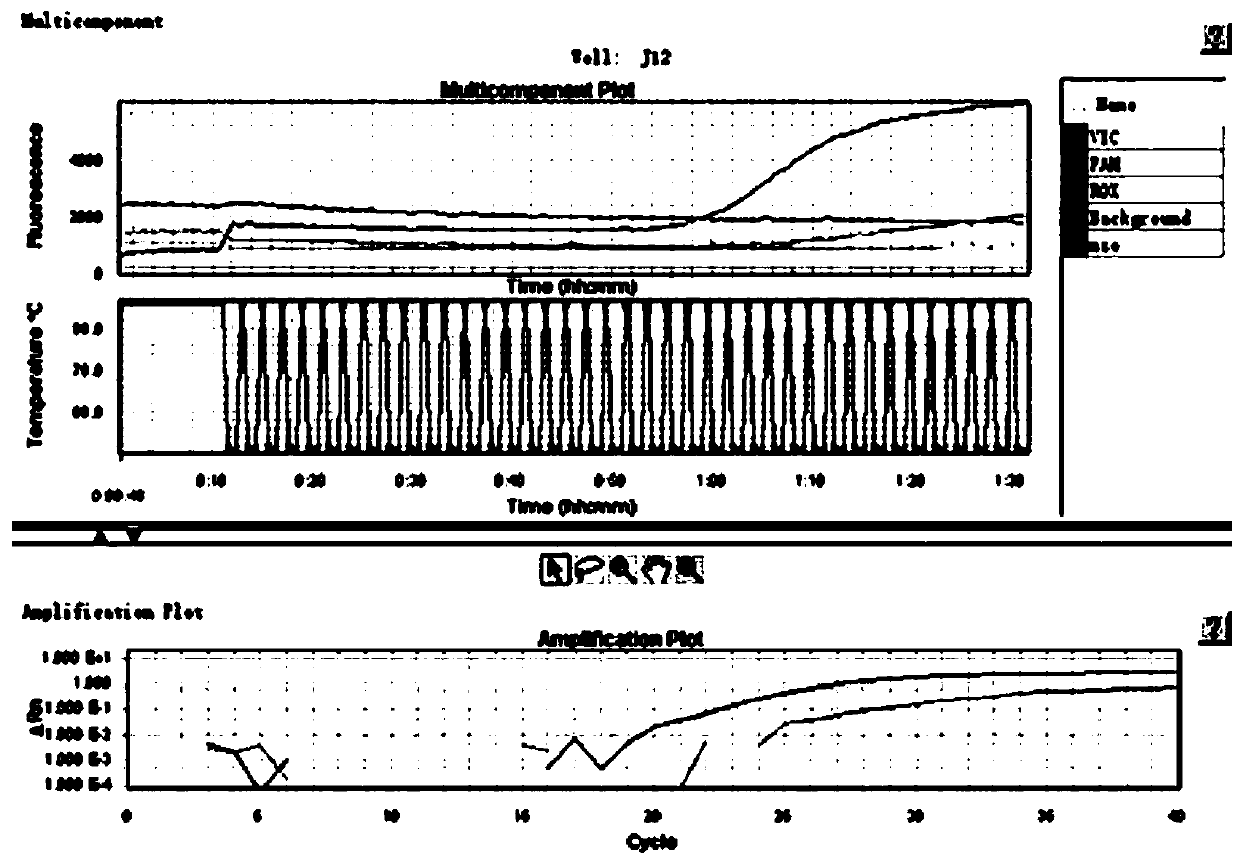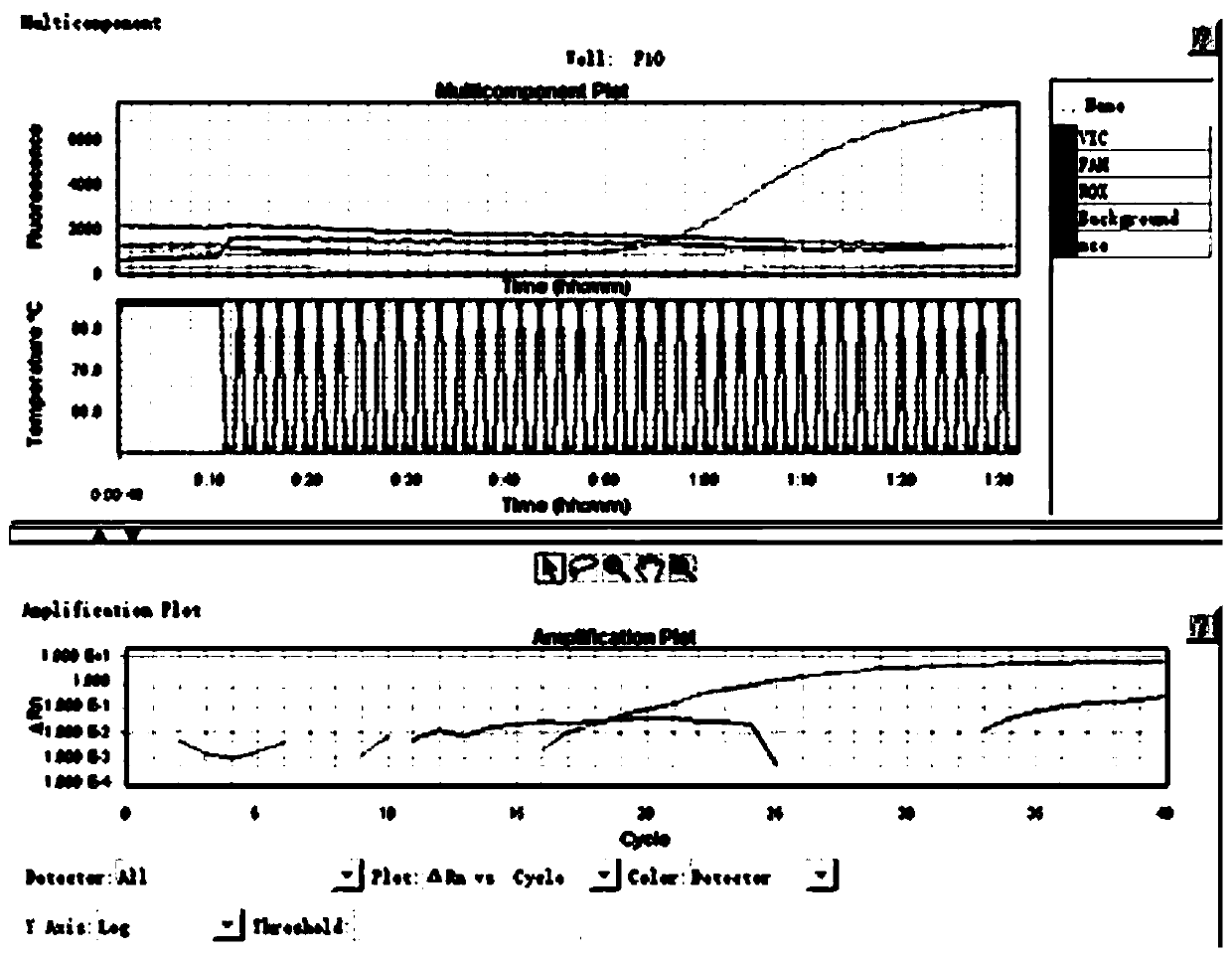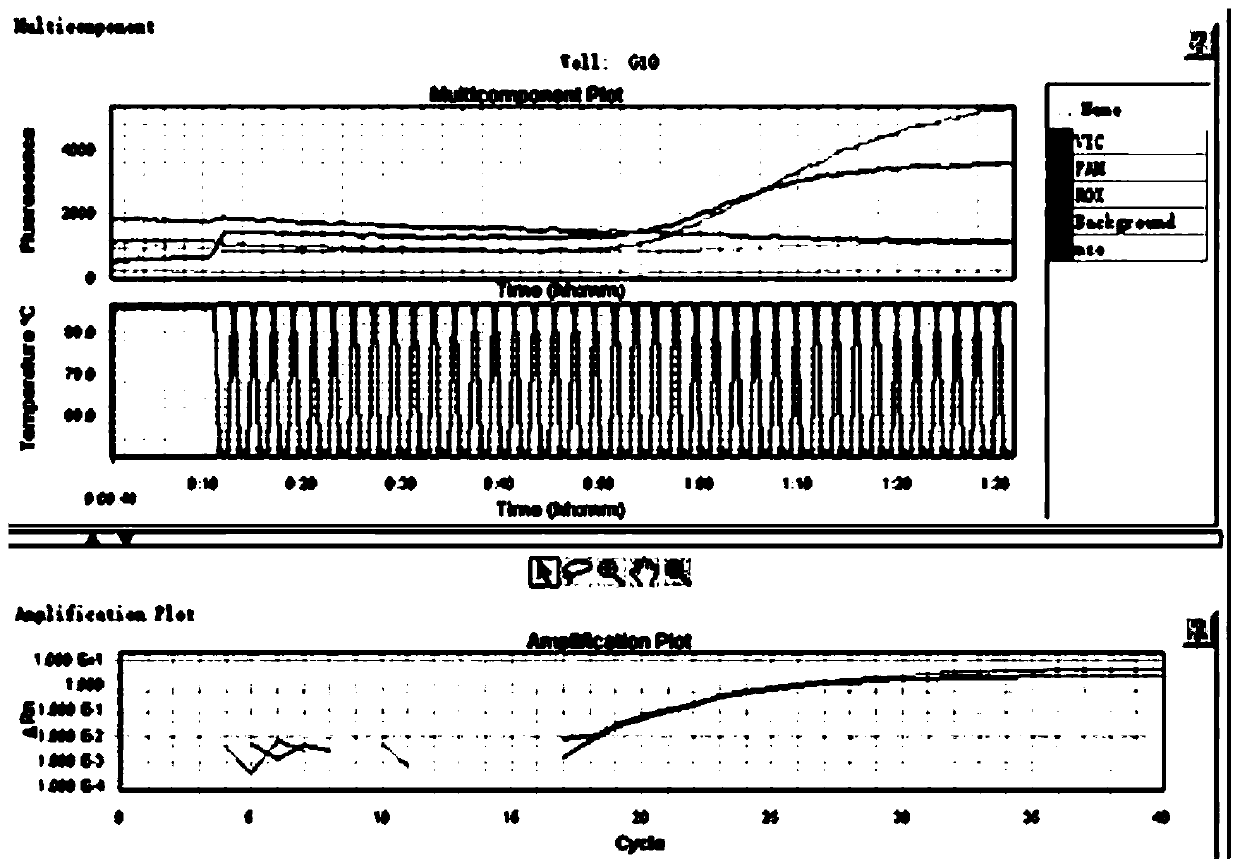Method for predicting risk of non-alcoholic fatty liver disease by gene polymorphism
A gene polymorphism, non-alcoholic technology, used in the field of gene polymorphism to predict the risk of non-alcoholic fatty liver disease, can solve the problem of incomplete application, incomplete distribution of genetic single nucleotide polymorphisms in ethnic groups, Lack of data and other problems, to achieve the effect of convenient and fast methods
- Summary
- Abstract
- Description
- Claims
- Application Information
AI Technical Summary
Problems solved by technology
Method used
Image
Examples
Embodiment 1
[0085] Example 1 template DNA extraction
[0086] 1) Use whole blood genomic DNA extraction kit to extract 200 μL blood sample;
[0087] 2) Combine 200ul of buffer G and 20μL of proteinase K into a premix, add the blood sample, shake and mix well;
[0088] 3) Place it at 56°C for a certain period of time, and at the same time mix it upside down until it becomes a clear liquid;
[0089] 4) Place it at room temperature for 5 minutes, add 350ul buffer solution BD, fully invert and mix, and then centrifuge briefly;
[0090] 5) Put the adsorption column into the collection tube, add the mixed solution, centrifuge at 12000rpm for 30 seconds, remove the useless liquid, and put it back into the collection tube;
[0091] 6) Take 500ul buffer solution GDB and add it to the adsorption column, centrifuge at 12000rpm for 30 seconds, remove useless liquid, and put it back into the collection tube;
[0092] 7) Add 600ul of rinse solution PWB to the adsorption column, centrifuge at 12000rp...
Embodiment 2D
[0096] Example 2 DNA concentration and purity identification
[0097] Use ultraviolet spectrophotometer to identify, use OD260nm / OD280nm ratio to calculate DNA purity, the ratio is 1.8, and according to the concentration measured, use ddH 2 0 Dilute the DNA to 20ng / μL, and finally store it in a -80°C refrigerator until use.
Embodiment 3
[0098] Example 3 Genotyping
[0099] TM6SF2rs58542926, PNPLA3 rs738409 and TRBI rs17321515 loci were genotyped using the TaqMan probe method (Beijing Bomiao Biological Company);
[0100] 1. Primers:
[0101] TM6SF2rs58542926 1:5'-ACGTTGGATGGCACCATGGAAGGCAAATAC-3';
[0102] TM6SF2rs58542926 2:5'-ACGTTGGATGTGAAGACCTTCATGCCAGCC-3';
[0103] PNPLA3rs738409: 5'-AACTTCTCTCCTTTGCTTTCACA-3';
[0104] PNPLA3rs738409: 5'-GGAGGGATAAGGCCACTGTAGA-3';
[0105] TRBI rs17321515: 5'-ACGTTGGATGGAACAAGGACTTTCGTCCTC-3';
[0106] TRBI rs17321515: 5'-ACGTTGGATGTAGAAGTCCCCTTCCCTTAG-3';
[0107] 2. PCR amplification reaction system
[0108]
[0109] SAP product alkaline phosphatase treatment
[0110]
[0111]
[0112] EX single base extension reaction
[0113]
[0114] 3. TaqMan amplification reaction program:
[0115]
[0116] 4. TaqMan amplification reaction
[0117] Configure the reaction mix according to the reaction system, and distribute it into 384-well plates; add sam...
PUM
 Login to View More
Login to View More Abstract
Description
Claims
Application Information
 Login to View More
Login to View More - R&D
- Intellectual Property
- Life Sciences
- Materials
- Tech Scout
- Unparalleled Data Quality
- Higher Quality Content
- 60% Fewer Hallucinations
Browse by: Latest US Patents, China's latest patents, Technical Efficacy Thesaurus, Application Domain, Technology Topic, Popular Technical Reports.
© 2025 PatSnap. All rights reserved.Legal|Privacy policy|Modern Slavery Act Transparency Statement|Sitemap|About US| Contact US: help@patsnap.com



